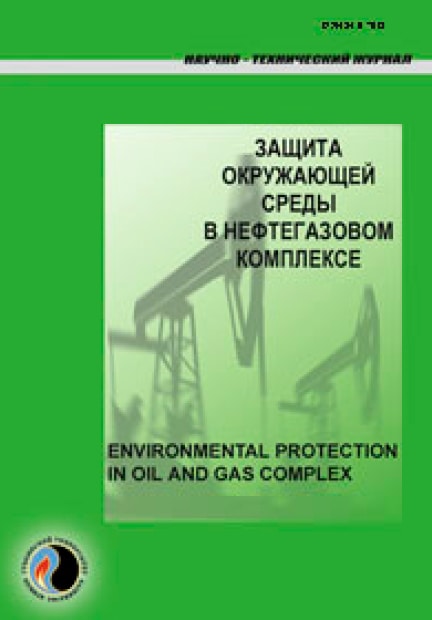Assessment of the phytotoxic effect of oil pollution in relation to higher plants on the example of southern chernozems of the Samara region
UDC: 622.88
DOI: -
Authors:
ISHCHENKO EVGENY P. 1
1,
KOKH EKATERINA A. 1
1,
ZHZHONIKOVA ALINA A. 1
1,
SAVELYEV ALEXEY A. 1
1
1 SamaraNIPIneft, Samara, Russia
Keywords: land reclamation, phytotoxic effect, oil pollution, Avena sativa, Brassica rapa, test object, southern chernozem, limiting indicator
Annotation:
The article is devoted to the study of oil-contaminated soils phytotoxic effect in the Samara region. The data of laboratory studies, conducted to assess the effect of various concentrations of petroleum products on the growth and development of oats (Avena sativa) and oilseed radish (Brassica rapa) are presented. The obtained data were processed statistically, regression equations were compiled and the values of DK20 – the concentration of oil causing a phytotoxic effect of 20 % or more – were calculated. It was found that based on the DK20 assessment on the 21st day of the study, the most sensitive parameter of southern chernozem turned out to be the average shoot length of plants. The value of the obtained indicator was 2,96 g of petroleum products per 1 kg of ordinary chernozem soil. At the end of the test, the most sensitive parameter was the number of flowers per plant. The value of the obtained indicator was 4,66 g of oil products per 1 kg of southern chernozem soil. Based on the data obtained, the limiting indicators of the phytotoxic effect of oil contamination on higher plants are determined using the example of southern chernozems of the Samara region at various stages of the life cycle. The research results are a prerequisite for the analysis and assessment of the permissible oil content and products of its transformation in soils after reclamation.
Bibliography:
1. Doklad ob ekologicheskoy situatsii v Samarskoy oblasti za 2022 g. / Pravitel'stvo Samarskoy oblasti; Min-vo lesnogo khoz-va, okhrany okruzhayushchey sredy i prirodopol'zovaniya Samarskoy obl. – Samara, 2023. – 175 s.
2. Dinamika rosta vysshikh rasteniy na rekul'tivirovannykh neftezagryaznennykh allyuvial'nykh lugovykh pochvakh raznogo granulometricheskogo sostava / A.A. Utombaeva, A.M. Petrov, E.R. Zaynulgabidinov [i dr.] // Rossiyskiy zhurn. prikladnoy ekologii. – 2020. – № 1(21). – S. 60–65.
3. Okolelova A.A., Merzlyakova A.S., German N.V. Fitotoksichnost' neftezagryaznennykh pochv // Estestvenno-gumanitarnye issled. – 2014. – № 1(3). – S. 26–31.
4. Kamenshchikova V.I. Otsenka ekologicheskogo sostoyaniya pochv taezhno-lesnoy zony s pomoshch'yu fitotestirovaniya // Vestn. Permskogo un-ta. – 2013. – № 3. – S. 80–85.
5. Rubin V.M., Il'yukova I.I. Otsenka fitotoksichnosti nefteproduktov v laboratornykh usloviyakh // Zhurn. Grodnen. gos. meditsin. un-ta. – 2014. – № 1(45). – S. 73–76.
6. Ishchenko E.P., Guba A.S. Osobennosti primeneniya normativov dopustimogo ostatochnogo soderzhaniya nefti v pochve // Zashchita okruzhayushchey sredy v neftegazovom komplekse. – 2013. – № 4(313). – S. 60–64.

